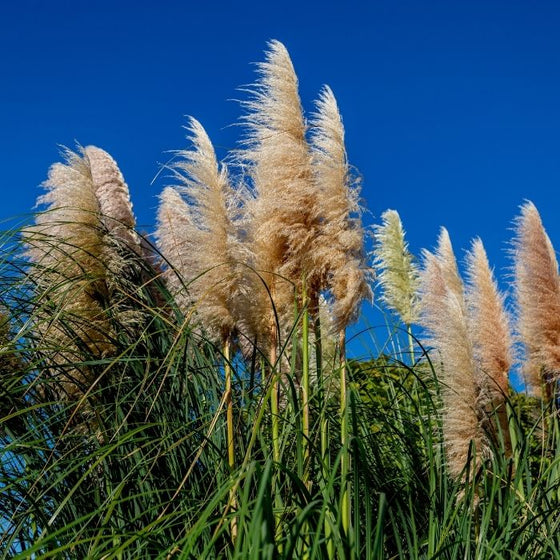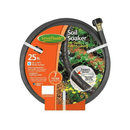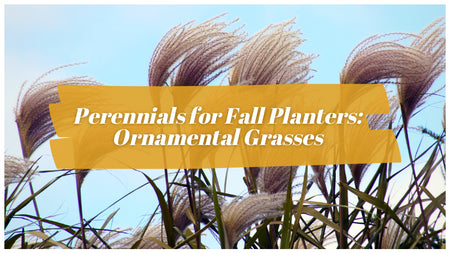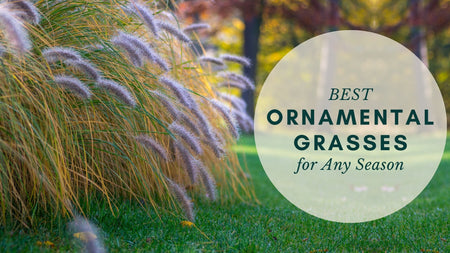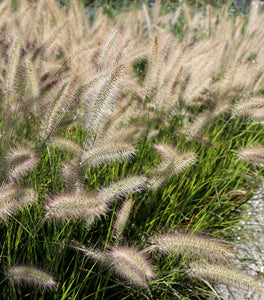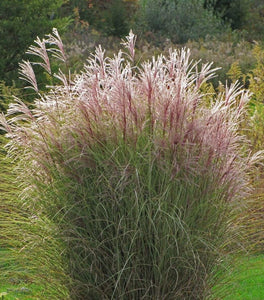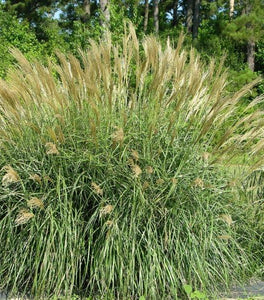
Images Depict Mature Plants
Dwarf Pampas Grass For Sale
Dwarf Pampas Grass (Cortaderia selloana 'Pumila') is a stunning ornamental grass that offers the beauty of traditional pampas grass in a more compact size, making it ideal for smaller landscapes or container gardening. With its graceful, arching foliage and feathery white plumes that rise above the plant in late summer, this grass brings striking visual appeal to any garden. Growing well in USDA Hardiness Zones 7-10, Dwarf Pampas Grass is known for its heat and drought tolerance, thriving in sunny locations with well-drained soil. Its smaller size, reaching only 4-6 feet tall and wide, makes it a perfect choice for adding texture and height to borders, mixed beds, or as a statement plant in smaller spaces.
Dwarf Pampas Grass is highly valued for its showy, plume-like flowers, which emerge in late summer and continue to provide interest into fall and winter. The fluffy, creamy-white plumes can be cut and used in fresh or dried floral arrangements, adding a touch of elegance indoors. The grass itself forms dense, mounded clumps of narrow, arching leaves that sway gracefully in the wind, creating movement and texture in the landscape. This variety of pampas grass is more manageable than its full-sized counterparts, making it easier to maintain and incorporate into garden designs without overwhelming other plants.
In addition to its beauty, Dwarf Pampas Grass is a low-maintenance plant that requires little care once established. It is deer-resistant, drought-tolerant, and can withstand salty conditions, making it an excellent option for coastal gardens. Whether planted as a focal point, a mass planting, or as a natural privacy screen, Dwarf Pampas Grass adds year-round interest and elegance to any landscape. Its compact size and showy plumes make it a versatile and attractive choice for gardeners looking to bring a touch of the exotic to their outdoor spaces.

| Hardiness Zone: | 7-10 |
|---|---|
| Mature Height: | 4 to 6 Feet |
| Mature Width: | 4 Feet |
| Sunlight: | Full sun to part sun |
| Water Requirements: | Average |
| Details: | It thrives in hot, full sun exposures and is especially useful as a specimen grass.This variety is very drought resistant once established |
| Selling Points: | Drought tolerant, tolerates urban pollution |
How to Care for Dwarf Pampas Grass
Be sure to read our planting instructions to ensure a healthy and happy Dwarf Pampas Grass for years to come!
How Do I Plant Dwarf Pampas Grass?
To plant Dwarf Pampas Grass, start by selecting a sunny location with well-drained soil, as this grass thrives in full sun and prefers drier conditions once established. Dig a hole twice as wide and just as deep as the root ball, allowing enough room for the roots to spread. Place the plant in the hole, ensuring the top of the root ball is level with the soil surface. Backfill the hole with soil, gently firming it around the base of the plant, and water thoroughly to help the grass settle in. If you’re planting multiple Dwarf Pampas Grass specimens, space them about 4-6 feet apart to allow for their mature size and ensure proper airflow. For the best growth, mulch around the base of the Dwarf Pampas Grass to retain moisture and suppress weeds, but avoid covering the crown of the plant. Water regularly during the first growing season to help establish a strong root system, then reduce watering as the plant becomes more drought-tolerant. This compact ornamental grass is ideal for adding height and texture to borders, mixed beds, or as a focal point in smaller gardens. With proper planting and care, Dwarf Pampas Grass will thrive, providing beautiful feathery plumes and movement in your landscape for years to come.
How Do I Water Dwarf Pampas Grass?
To water Dwarf Pampas Grass, provide deep, thorough watering during its first growing season to help establish a strong root system. Water the plant once or twice a week, ensuring the soil stays consistently moist but not waterlogged. After the first year, Dwarf Pampas Grass becomes drought-tolerant and requires less frequent watering. In established plants, water only during prolonged dry spells or extreme heat, as this grass prefers drier soil conditions once mature. Always check that the top 2-3 inches of soil are dry before watering to avoid overwatering, which can lead to root rot. If you're growing Dwarf Pampas Grass in containers, the soil will dry out faster, so be sure to check moisture levels regularly and water when the top inch of soil feels dry. Make sure the container has drainage holes to prevent standing water, which can damage the roots. Watering early in the morning helps the plant absorb moisture more effectively and keeps the foliage healthy. Proper watering ensures that Dwarf Pampas Grass maintains its vibrant growth and continues to produce its signature feathery plumes that add height and texture to any landscape.
How Do I Fertilize Dwarf Pampas Grass?
To fertilize Dwarf Pampas Grass, apply a balanced, slow-release fertilizer in early spring as new growth begins to emerge. A general-purpose 10-10-10 or 14-14-14 fertilizer provides essential nutrients like nitrogen, phosphorus, and potassium, promoting healthy foliage and strong plume production. Spread the fertilizer evenly around the base of the plant, being careful not to let it touch the leaves, and water thoroughly after applying to help the nutrients penetrate the soil and reach the roots. For best results, fertilize once a year, as Dwarf Pampas Grass is a low-maintenance plant that doesn’t require heavy feeding. If you prefer an organic approach, compost or well-rotted manure can be mixed into the soil in early spring to provide a slow release of nutrients throughout the growing season. Be cautious not to over-fertilize, as too much nitrogen can cause excessive foliage growth at the expense of the plant's signature feathery plumes. Proper fertilization encourages healthy, lush growth and ensures that Dwarf Pampas Grass produces abundant, showy plumes that add height, texture, and movement to your landscape, while maintaining its compact, manageable size.

How Do I Prune Dwarf Pampas Grass?
To prune Dwarf Pampas Grass, the best time to do so is in late winter or early spring before new growth begins. Using sharp pruning shears or a hedge trimmer, cut the plant back to about 12-18 inches above the ground, removing the previous season’s dead foliage and spent plumes. This hard pruning encourages fresh, healthy growth for the new season and helps the plant maintain its compact, attractive shape. Be sure to wear gloves and long sleeves when pruning, as the grass blades can be sharp and irritating to the skin. Regular pruning keeps Dwarf Pampas Grass looking tidy and prevents it from becoming overgrown. Throughout the growing season, you can also trim away any damaged or dead foliage to keep Dwarf Pampas Grass neat. If the plant becomes too large or unwieldy, thinning out some of the clumps can help control its size while improving air circulation. Avoid cutting into new green growth during the growing season, as this can impact the plant's ability to produce its iconic feathery plumes. Proper pruning ensures that Dwarf Pampas Grass remains a focal point in your landscape, with its graceful arching leaves and tall, showy plumes providing height and texture year-round.

